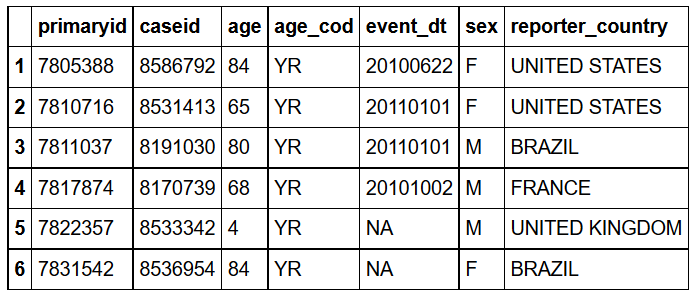
- #Sqlite count distinct line how to#
- #Sqlite count distinct line full#
- #Sqlite count distinct line code#
#Sqlite count distinct line code#
VALUES( 1),( 2),( 3),( null),( 3) Code language: SQL (Structured Query Language) ( sql ) Second, insert five rows into the t1 table: INSERT INTO t1(c) SQLite COUNT() function illustrationįirst, create a table called t1 that has one column: CREATE TABLE t1(c INTEGER) Code language: SQL (Structured Query Language) ( sql ) The COUNT(*) function returns the number of rows in a table, including the rows including NULL and duplicates. SQLite provides another syntax of the COUNT() function: COUNT(*) Code language: SQL (Structured Query Language) ( sql ) The expression can be a column or an expression that involves columns to which the function COUNT() is applied.
#Sqlite count distinct line how to#
The MAX(Archive.Key) just selects the largest value in the identifier column, which is likely the most recent image.Summary: in this tutorial, you will learn how to use SQLite COUNT function to get the number of items in a group. You could add something distinct to the JOIN or use the GROUP functionįor simplicity's sake and given that I cannot see your tables, I would assume that the ArchiveCatalogue table has some kind of unique identifier in it, so you could use that to pick out a single image per row SELECT artist.ArtistIDĪrchiveCatalogues.ARTIST = artist.surname ANDĪrchiveCatalogues.FIRSTNAME = artist.firstnames The problem you have here is the query has no way to know which image you want so it gives you all that are relevant. The join looks strange but it's hard to tell without knowing what the tables and their key's look like. ON ArchiveCatalogues.ARTIST = artist.surnameĪND ArchiveCatalogues.FIRSTNAME = artist.firstnames , row_number() over (partition by artist.ArtistID You can use window functions to achieve this by enumerating ArchiveCatalogues per Artists: SELECT artist.ArtistID

Second, you need to determine which row among duplicates that you are interested in (or get a random one). This is exactly the same as your GROUP BYdoes, so distinct is redundant. INNER JOIN ArchiveCatalogues ON (ArchiveCatalogues.ARTIST = artist.surname)ĪND (ArchiveCatalogues.FIRSTNAME = artist.firstnames)įirst (common misunderstanding), distinct is not applied to individual columns, what you get is distinct rows. Here is the code: SELECT DISTINCT artist.ArtistID I used DISTINCT on the artist.ArtistID field, but to no avail. The query below is pulling every result from the ARCHIVESCATALOGUE table, i.e. So I need a query which INNER JOINs the two tables. I want to generate a query which will give me all of the detail from the ARTISTS table, and include an image (does not matter which one) from the other table for each of the artists.
#Sqlite count distinct line full#
I have another table ( ARCHIVECATALOGUES), full of auction results, which have the images I need. I have two tables, one ( ARTISTS) with a list of different artists, details and biographies, but no images.


 0 kommentar(er)
0 kommentar(er)
